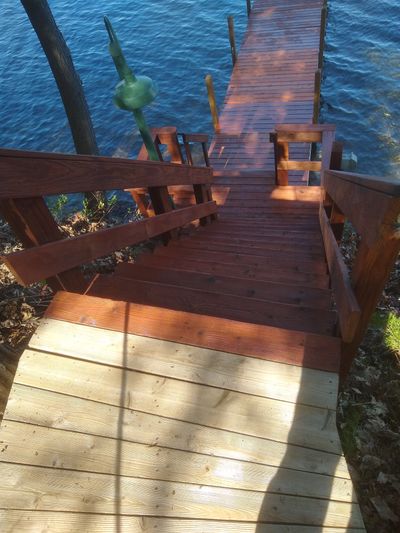Ask the Builder: What to do about peeling and flaking deck sealers

Q. I’m so frustrated. Before I clean and seal my outdoor deck, I need your advice. It’s a tremendous amount of work, and I’m discovering I need to do it every three years. I scream each spring when I see the expensive sealer I’ve used start to peel and flake. Surely there’s a better way. How would you clean and seal your outdoor wood so that maintaining it is not so much work? – Gina H., Cilleyville, N.H.
A. A lot of people suffer this agony each spring. I can tell you for a fact it’s getting worse. I’m hearing more and more complaints about deck sealing products that peel and flake.
After the research I did for my book, “Roofing Ripoff,” about how asphalt shingles are failing far faster than they used to, it’s easy for me to be cynical when it comes to outdoor wood sealers. While I have no evidence to support this, I wouldn’t be surprised if sealer manufacturers made products that failed fast and in a dramatic way so you end up buying more. That’s what my research suggested some asphalt shingle manufacturers were doing, but I digress.
Let’s talk about wood stains for a moment. If you’ve ever stained interior wood, you may have used a colored liquid that’s the consistency of water. These stains typically soak immediately into the wood fibers, and nothing is really left on the surface of the wood but microscopic pigment particles.
Years ago, many outdoor wood stains and sealers were made the same way. They penetrated into the wood. That said, there were outdoor sealers you could buy that behaved more like urethanes or varnishes. These are film-forming products that deposit a resin or coating on top of the wood. When they fail, and they all do, they peel and flake. It seems many of today’s deck sealers are film formers.
The failure of the outdoor deck sealers is predictable. The sun’s harsh ultraviolet rays blast apart the film-forming sealers with little effort. Add to this the fact that wood also is a hygroscopic material. This is a fancy word describing how wood swells and shrinks as it absorbs and releases water. I recorded a dramatic video of this happening in recent months. You can watch it on askthebuilder.com by typing “treated lumber cracking” into my search engine.
I just started testing a penetrating wood sealer stain a month ago. I used it to seal my boat dock panels and the stairs leading down to the dock. I have a combination of treated lumber and cedar. I could tell it penetrated into the wood fibers, and if it left a resin on the surface, it’s very light. The product description says it’s a penetrating sealer.
The only thing I didn’t like about it is it’s a combination of three oils: linseed, tung and long-oil alkyds. These are scrumptious food for mold and mildew. I’m sure the manufacturer added chemical additives to prevent the growth of these things. After one month, I’ve not seen any trace of mold or mildew growth.
You get the best protection from a sealer that has lots of dark pigment. The pigment acts like sunscreen. The pigment sacrifices itself to the UV rays and slows the destruction of the wood fibers. You can see the UV damage caused by the sun after cleaning the wood. Have you seen the peach fuzz after the wood dries? Those are sun-damaged wood fibers just hanging on.
You might wonder how I clean my outdoor wood. Here’s what I don’t do. I don’t use a pressure or power-washing machine. These are highly destructive to wood. The high-pressure water erodes the lighter-colored spring wood from between the darker bands of denser summer wood. Use a pressure washer a number of times and soon your new wood will look like a decades-old fishing pier.
I’ve had the best luck using certified organic oxygen bleach cleaners that you dissolve in water for cleaning. I apply mine in the shade to dry wood so the solution soaks deep into the fibers to help clean the wood. Don’t use chlorine bleach; it’s so harsh, it will remove the natural color from the wood, and it destroys the lignin that holds the wood fibers together. Any product that has sodium hypochlorite on the label is chlorine bleach.
The best way to minimize work with maintaining outdoor wood is to recoat the wood before it completely fails. If you use a penetrating sealer, as I did a month ago, you might discover that in two years you should apply a thin maintenance coat. By then you may just have to do a mild washing of the wood much like you wash your car using liquid dish soap and water.
I did a little experiment this year to be able to gauge the wear of the sealer. I had to rebuild a few of my dock panels and had a few pieces of scrap cedar leftover. I decided to seal those, too, and put them in my garage up on a shelf out of the sun and weather. Next spring I’ll take them out and put them on the dock to see how much the sealer suffered. As soon as I see significant wear, I’m doing a maintenance coat.
Subscribe to Tim Carter’s free newsletter and listen to his new podcasts at askthebuilder.com.